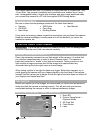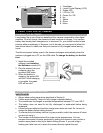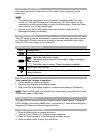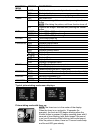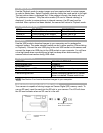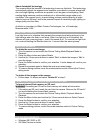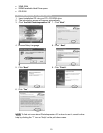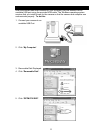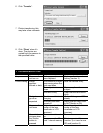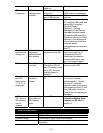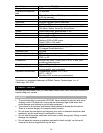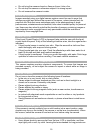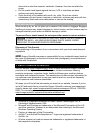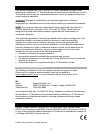
15
•
Do not bring the camera close to a flame or throw it into a fire.
• Do not drop the camera or otherwise subject it to strong impact.
• Do not immerse the camera in water.
NOTES ON COPYRIGHT
Images recorded using your digital camera system cannot be used in ways that
infringe copyright laws without the consent of the owner, unless intended only for
personal use. Note that some restrictions apply to the photographing of stage
performances, entertainments and exhibits, even when intended purely for personal
use. Users are also asked to note that the transfer of memory containing images or
data protected under copyright laws is only permissible within the restrictions
imposed by those copyright laws.
LIQUID CRYSTAL
If the Liquid Crystal Display (LCD) is damaged, take particular care with the liquid
crystal inside the panel. If any of the following situations arise, take the urgent action
indicated:
• If liquid crystal comes in contact your skin: Wipe the area with a cloth and then
wash thoroughly with soap and running water.
• If liquid crystal gets into your eye: Flush the affected eye with clean water for at
least 15 minutes and then seek medical assistance.
• If liquid crystal is swallowed: Flush your mouth thoroughly with water. Drink large
quantities of water and induce vomiting. Then seek medical assistance.
HANDLING YOUR DIGITAL CAMERA SAFELY
This camera contains precision electronic components. To ensure that images are
recorded correctly, do not subject the camera to impact or shock while an image is
being recorded.
PLACES TO AVOID
Do not use or store the camera in the following types of locations:
• In the rain or in very humid, dirty or dusty places.
• Places subject to extreme temperature rises, such as in direct sunlight or a
closed car in summer. Extremely cold places.
• Places subject to strong vibration.
• Places affected by smoke or steam.
• Places subject to strong magnetic fields (such as near motors, transformers or
magnets).
• In contact with chemicals such as pesticides or next to rubber or vinyl products
for long periods of time.
• Sandy places such as beaches or deserts, or places where there is wind-borne
sand.
NOTE ON CONDENSATION
If the camera is carried suddenly from a cold location into a warm location, water
droplets may form on the inside of the camera or on the lens (condensation). When
this occurs, switch the camera off and wait an hour before using the camera.
CLEANING YOUR CAMERA
• Use a blower brush to remove dust from the lens, LCD or viewfinder, and then
wipe lightly with a soft, dry cloth. Leaving the lens extended for long periods can




